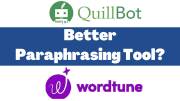Google Play Store vs. Apple App Store: Comparing Features & Experience
The Google Play Store and Apple App Store stand as the two major players in the mobile app marketplace, shaping the way users interact with their smartphones and tablets. These digital storefronts serve as gateways to millions of apps, games, and digital content for Android and iOS devices respectively. With the increasing reliance on mobile apps in our daily lives, understanding the differences between these platforms has become crucial for both users and developers.
This comprehensive comparison delves into various aspects of the Google Play Store and Apple App Store. It examines app availability and quantity, highlighting the vast selection of apps on both platforms. The article also explores developer costs and requirements, shedding light on the process of publishing apps.
Additionally, it looks at app security measures, the diversity of app categories, and the systems for user ratings and reviews. By analyzing these factors, readers will gain valuable insights into the strengths and weaknesses of each platform.
Google Play Store vs Apple Play Store: A Comprehensive Comparison
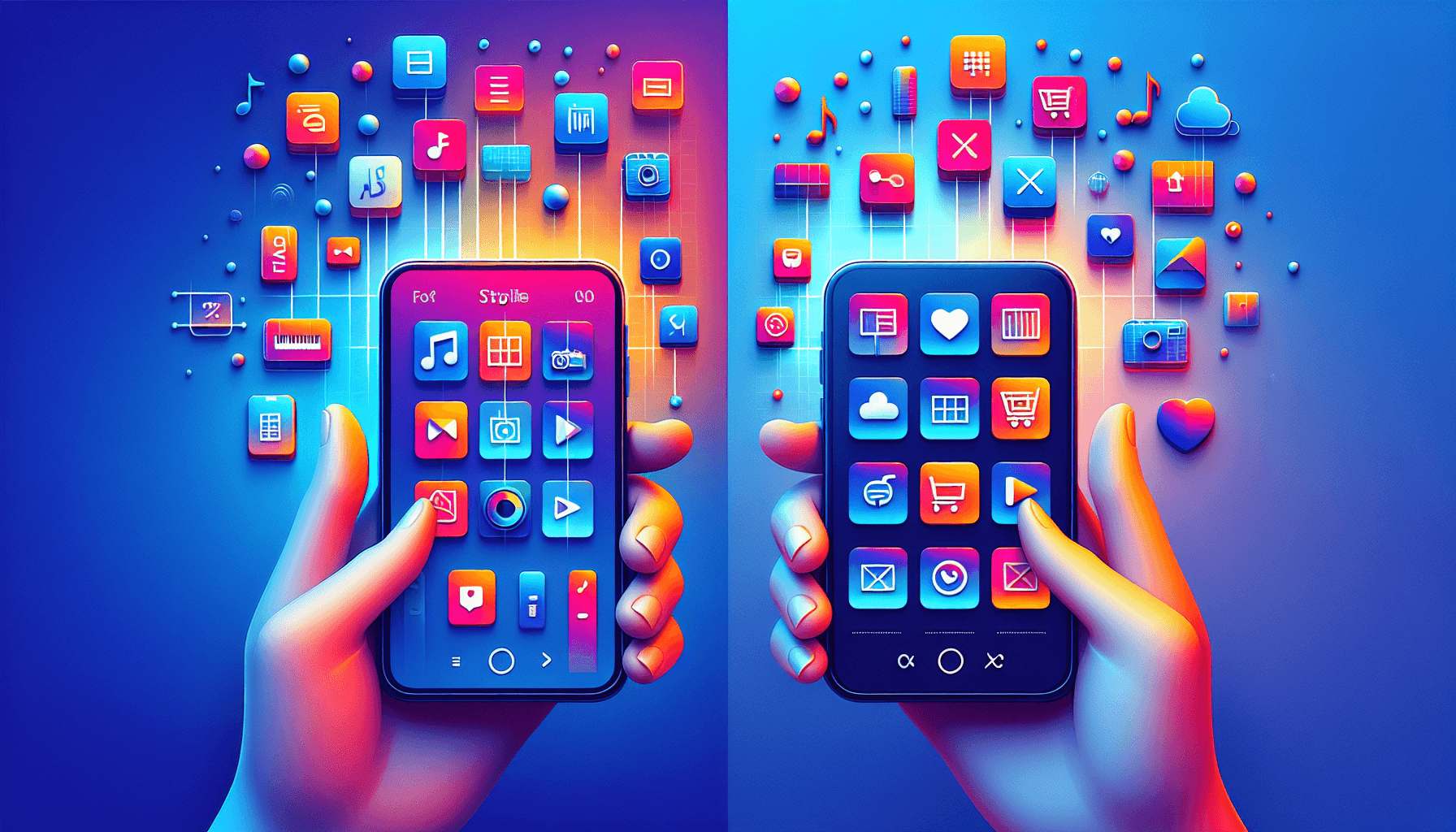
History and Evolution
Google Play Store:
Launched on March 6, 2012, the Google Play Store unified the Android Market, Google Music, and Google eBookstore, streamlining access to apps, games, music, books, and movies. Initially, the Android Market, which began in 2008, faced challenges with fragmentation and app quality. Over the years, Google Play has seen significant improvements, including the introduction of Google Play Services and stricter app review processes, making it a central hub for millions of Android users.
Apple App Store:
The Apple App Store launched on July 10, 2008, alongside the iPhone 3G, revolutionizing the mobile industry by providing a platform for developers and users to access a wide range of apps. The App Store's success was immediate, with its rigorous review process setting a high standard for app quality and security. Key developments include in-app purchases, subscription models, and curated content, making the App Store a vital part of Apple's ecosystem.
User Experience and Interface
Google Play and Apple's App Store offer distinct user experiences in interface design, navigation, and app discovery. Here's a concise comparison:
Interface Design and Navigation:
Google Play features a more open, grid-based layout with larger app icons and visual elements. Its interface is generally considered more intuitive and user-friendly, especially for Android users. The App Store, on the other hand, has a sleeker, more curated feel with a focus on editorial content. It uses a card-based design that showcases app details effectively.
Search and Discoverability:
Both platforms offer robust search functionalities, but they differ in approach. Google Play leverages Google's search expertise, providing more granular filters and often yielding more comprehensive results. The App Store's search can be more precise but sometimes feels limited.
Google Play relies heavily on algorithmic recommendations and user behavior for app discovery. The App Store emphasizes editorial curation, featuring hand-picked apps and collections. This can make discovering niche apps easier on the App Store, while Google Play might surface a wider variety of options.
App Categories and Diversity
The Google Play Store and Apple App Store offer a wide range of app categories, catering to diverse user needs and interests. Both platforms have implemented robust categorization systems to help users discover new apps and assist developers in positioning their products effectively.
Google Play Store Categories
The Google Play Store boasts an extensive list of categories, encompassing both applications and games. Some of the primary categories include:
- Art & Design
- Auto & Vehicles
- Beauty
- Books & Reference
- Business
- Communication
- Dating
- Education
- Entertainment
- Finance
For games, the Play Store offers subcategories such as Action, Adventure, Arcade, Board, Card, Casino, Casual, Educational, Music, Puzzle, Racing, Role Playing, Simulation, Sports, Strategy, Trivia, and Word.
Developers can select up to five app tags, which should accurately reflect the app's content and functionality. For example, a multiplayer racing game with vintage cars might have tags like "Racing" and "Car racing." It's crucial to choose tags that are obviously relevant to the app based on its store listing or initial in-app experience.
Apple App Store Categories
The Apple App Store also provides a comprehensive set of categories for apps and games. While the specific list wasn't provided in the given information, it's known that the App Store has a similar structure to the Google Play Store, with categories such as Social Networking, Photography, Productivity, and more.
For the App Store, the primary category is particularly important for an app's discoverability. It determines where the app appears when users browse or filter search results, and it influences placement on the Apps tab or Games tab.
Niche and Specialized Apps
Both app stores have seen a growing trend towards niche and specialized app categories. This reflects a shift in the market from a platform-driven service offering to a more sophisticated, customer segment-driven approach. As the number of apps has dramatically expanded, users face increasing difficulties in locating specific apps due to the sheer volume of options available.
To address this challenge, the market has seen the emergence of niche app stores that provide more streamlined, targeted app selections and results. This trend has doubled every year, indicating a strong demand for easier search and discoverability of apps.
The growth of niche app stores and specialized categories has implications for both publishers and app stores. Developers need to carefully consider their app's categorization and tagging to ensure maximum visibility to their target audience. Meanwhile, app stores continue to refine their categorization systems to improve user experience and app discovery.
In conclusion, the diversity of app categories in both the Google Play Store and Apple App Store reflects the ever-expanding mobile app ecosystem. As the market evolves, both platforms are likely to continue adapting their categorization strategies to meet the changing needs of users and developers alike.
App Availability and Numbers
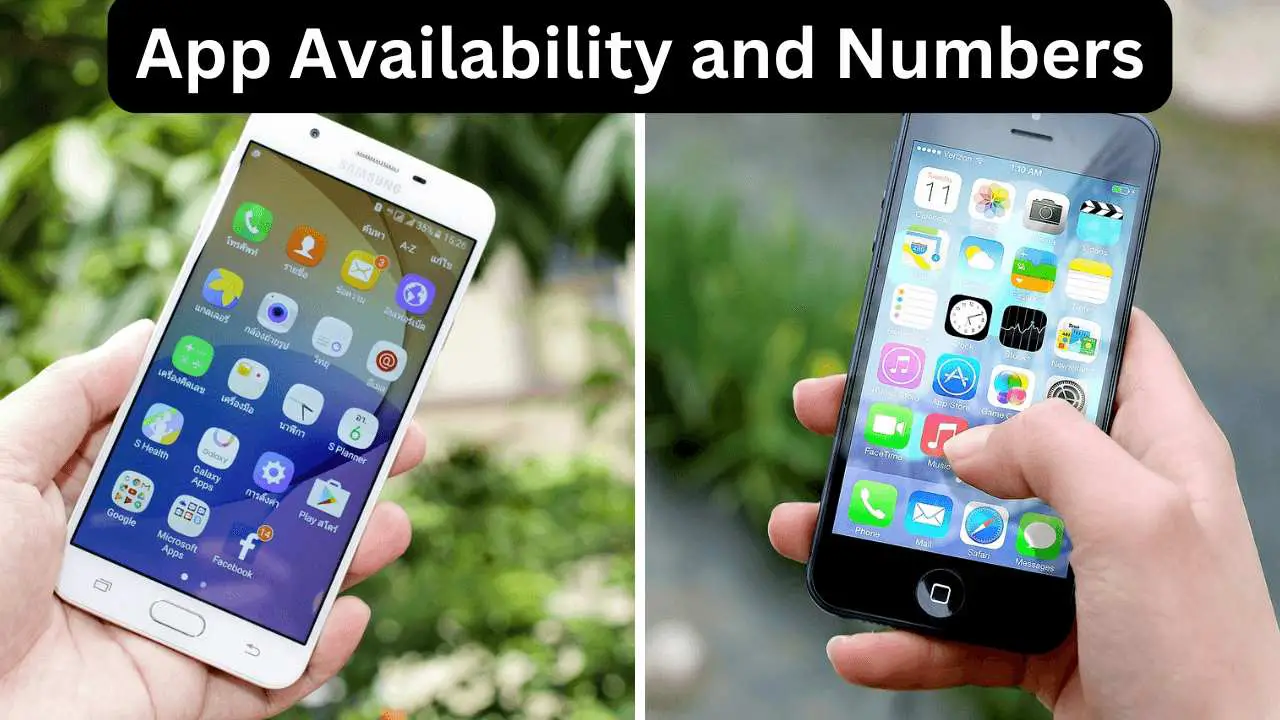
Google Play Store Review Process
The Google Play Store employs a combination of automated and manual checks to ensure policy compliance. This process typically takes a few days but can be longer during peak times. Developers can expedite the review by providing detailed app descriptions, ensuring policy adherence, and performing pre-submission checks. The approval time for new apps varies but usually takes a few hours to a few days. During closed testing, the review process may take up to seven days.
Apple App Store Review Process
Apple's App Store has a more rigorous review process. On average, 90% of submissions are reviewed in less than 24 hours. The review involves both automated and manual checks to ensure a safe and trusted experience for users. Developers must provide complete information, including demo accounts and specific configurations, to facilitate the review process.
Google Play Store App Numbers
As of August 2024, the Google Play Store boasts an impressive 2,303,976 apps. This includes 2,025,777 mobile apps and 278,198 mobile games. The store offers 2,232,848 free apps and 70,203 paid apps. Education is currently the top Android category, with 256,668 free apps and 8,561 paid apps.
Apple App Store App Numbers
The Apple App Store, while smaller, still offers a substantial 2,038,502 apps. This includes 1,800,740 apps and 237,763 games. The store features 1,939,976 free apps and 96,934 paid apps. Games is currently the top iOS genre, comprising 221,189 free apps and 15,496 paid apps.
Quality vs. Quantity
While Google Play Store has a larger number of apps, Apple's App Store is known for its stricter review process, potentially leading to higher-quality apps. Apple's approach focuses on providing a safe experience for users and a great opportunity for developers to succeed.
Google Play Store Revenue Model
Google Play takes a 30% cut of app revenue, with 70% going to developers. However, 99% of developers qualify for a reduced 15% fee on the first $1 million in annual revenue. In 2019, the Google Play Store generated over $11.2 billion in total revenue.
Apple App Store Revenue Model
The Apple App Store follows a similar revenue split, with 70% to developers and 30% to Apple. Despite having fewer apps, the App Store generated an estimated $85.1 billion in revenue in 2021, accounting for 63% of total app revenue across both platforms.
Developer Costs and Requirements
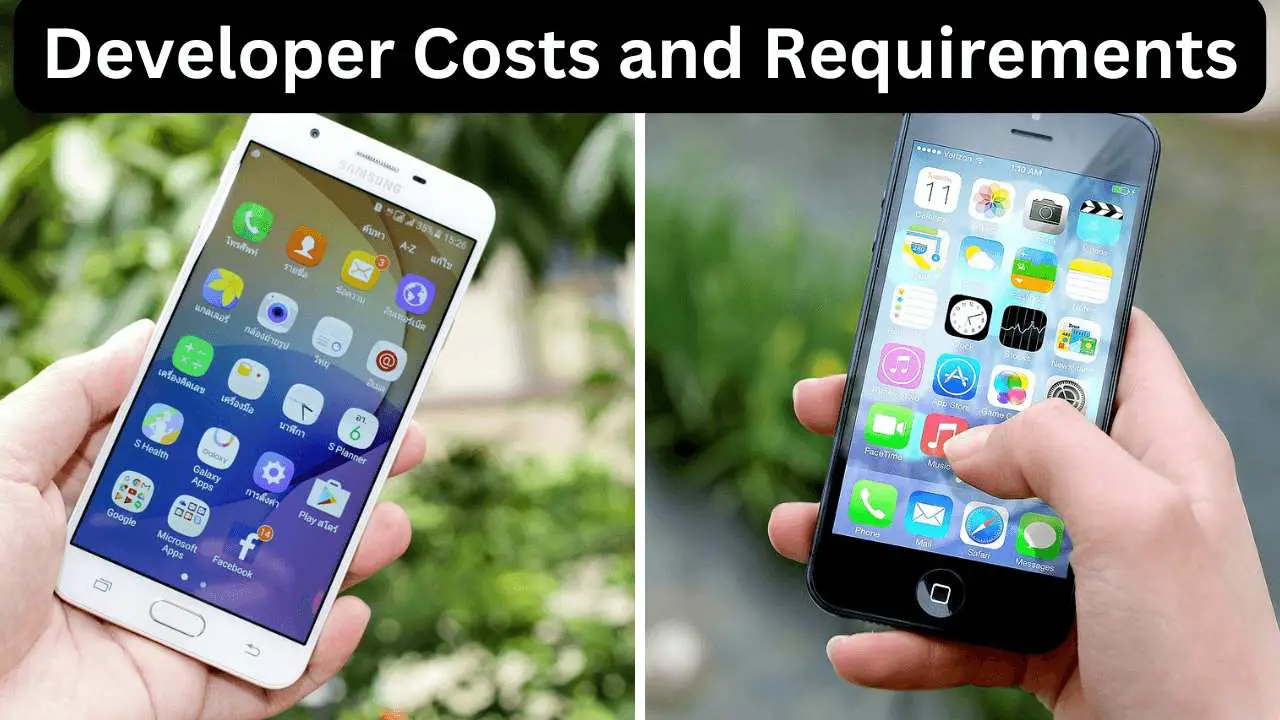
Google Play Developer Fees
The Google Play Store offers a more accessible entry point for developers. To publish apps on this platform, developers need to pay a one-time fee of USD 25.00. This non-refundable payment grants access to the Google Play Console, allowing developers to publish an unlimited number of apps. The process to become a Google Play developer involves several steps:
- Access the Google Play Console page
- Create a Google account if you don't have one
- Fill out the "about you" section
- Set up the account with developer details
- Provide information about planned apps
- Agree to the terms of service
- Make the one-time payment
In March 2021, Google introduced a change to its service fee structure to boost developer success. Starting July 1, 2021, developers earn 85% of the first USD 1 million in annual revenue, with Google taking a 15% cut. This tiered pricing structure is designed to support smaller developers while ensuring Google can continue to provide and improve its services.
Overall, the Play Store’s developer fees are considered competitive and have contributed to the platform’s large and diverse app ecosystem. After reaching this threshold, the standard 30% fee applies for the rest of the year.
Apple App Store Developer Fees
Apple's approach to developer fees differs significantly from Google's. The Apple Developer Program requires an annual fee of USD 99.00, which may vary by region. This recurring cost provides access to Apple's development tools, beta software, and the ability to publish on the App Store.
Apple's commission structure is as follows:
- Standard Commission: 30% for paid apps and in-app purchases
- Reduced Commission: 15% for developers earning less than USD 1 million annually
- Subscription Commission: 15% after a customer subscribes for over a year
The App Store review process is more rigorous compared to Google Play. Apple employs human moderators to review all applications, ensuring they meet strict guidelines regarding functionality, quality, content suitability, and user privacy. This process can lead to longer approval times and potentially more rejections.
Platform-Specific Development Tools
Both platforms provide developers with unique tools and resources:
Google Play:
- Faster app review process (2 to 18 hours) due to automated systems
- Google Play Console for app management and analytics
- Android Studio for app development
Apple App Store:
- Xcode for iOS app development
- TestFlight for beta testing
- App Store Connect for app management and analytics
Developers must consider these platform-specific tools when deciding where to publish their apps. While Google Play offers a more streamlined and cost-effective entry, the Apple App Store's stringent review process and potentially higher-spending user base can be attractive for certain app types.
In conclusion, the choice between these platforms depends on various factors, including the target audience, app category, and development resources. Developers should carefully weigh the costs, requirements, and potential returns when deciding which platform to prioritize for their app launch and ongoing development efforts.
App Security and Privacy Measures
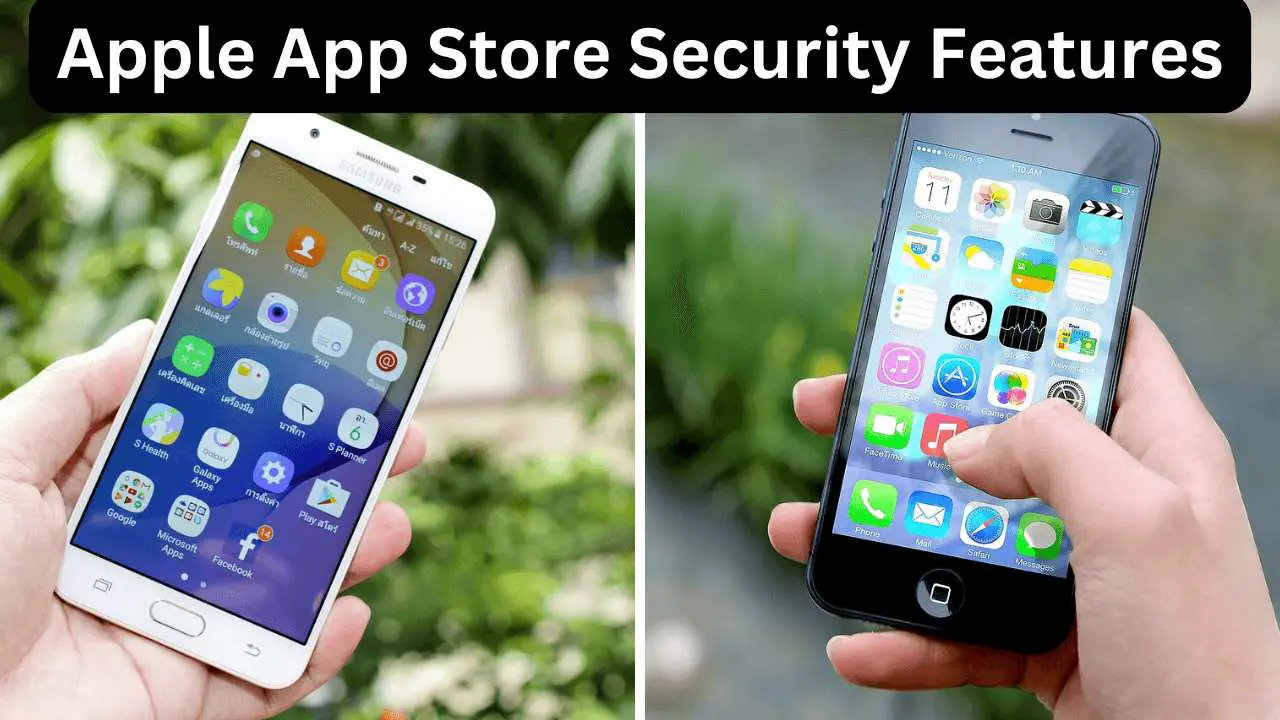
Google Play Protect
Google Play Protect serves as the built-in malware defense for Android devices. This system scans 125 billion apps daily, ensuring the safety of all applications, regardless of their source. It employs machine learning to adapt and improve continuously, making it the most widely deployed mobile threat protection service globally.
Key features of Google Play Protect include:
- Automatic scanning of all apps on Android phones
- Prevention of harmful app installations
- On-device capabilities integrated with cloud-based components
- Regular updates to enhance functionality
Users can manage Google Play Protect settings through the Google Play Store app. To check if a device is Play Protect certified or to enable/disable scanning features, users can follow these steps:
- Open the Google Play Store app
- Tap the profile icon
- Access Settings
- Navigate to About or Play Protect settings
Apple App Store Security Features
The Apple App Store prioritizes user safety through a rigorous app review process. Every app and update undergoes evaluation for privacy, security, and safety requirements. This process aims to keep malware, cybercriminals, and scammers out of the App Store.
Key security protections include:
- Automated scans for known malware
- Human review by a team of experts
- Manual checks for unnecessary access to sensitive data
- Trustworthy, centralized user reviews
- Processes for correction and removal of problematic apps
Apple's approach to app security relies on a combination of robust App Review and platform protections. This strategy helps limit the potential damage from malicious apps and provides users with powerful protections.
User Data Protection Policies
Both platforms have implemented measures to enhance user data protection and transparency. The introduction of privacy labels in both app stores has been a significant step towards informing users about data processing practices.
Google Play Store:
- Requires developers to disclose data collection practices
- Exempts mandatory disclosures under certain conditions (e.g., anonymized data)
Apple App Store:
- Mandates privacy labels for all apps
- Allows optional disclosure under specific criteria (e.g., infrequent data collection)
Both stores have faced criticism for their privacy label designs, which may not fully capture all privacy risks. Developers must navigate these requirements while ensuring compliance with data protection regulations like GDPR.
It's important to note that while app stores provide these security measures, users should remain vigilant and make informed decisions when granting permissions to apps. Both Google and Apple continue to refine their security practices to address evolving threats and enhance user protection in the mobile app ecosystem.
User Ratings and Reviews
Google Play Rating System
The Google Play Store employs a dynamic rating system that focuses on an app's current quality. Rather than using a lifetime average, the Play Store calculates ratings based on the app's most recent user reviews. This approach gives users a more accurate understanding of the app's current state, as apps often evolve over time, adding or removing features.
The rating score on Google Play is highly visible, appearing alongside the app icon in featured collections, category rankings, search results, and the store listing page. This prominence makes ratings a crucial factor in an app's success on the platform. Google's algorithm places significant emphasis on recent ratings and reviews, making it essential for developers to maintain consistent quality across updates.
To appear in the Top Charts on Google Play, an app must have a minimum rating of 3.0 stars. Apps with numerous negative reviews are less likely to appear in the "Suggested for You" section, directly impacting discoverability and download numbers.
Apple App Store Rating System
The Apple App Store allows users to rate apps on a scale from 1 to 5 stars and write reviews for iOS. Unlike Google Play, the App Store displays a single summary rating for each app in every country or region, along with individual customer ratings and reviews.
One unique feature of the App Store is that developers can reset their app's rating when releasing a new version. This can be beneficial if an update addresses previous user concerns, but it should be used sparingly as having few ratings may discourage potential users from downloading the app.
The App Store product page displays the app's summary rating, and users can view individual reviews. Developers have the opportunity to respond to customer reviews, which can help improve the app's reputation and build rapport with users.
Impact on App Visibility
Ratings and reviews significantly influence an app's visibility and success on both platforms. They serve as primary indicators of user satisfaction and play a crucial role in app store optimization (ASO). Here's how ratings and reviews impact app visibility:
Search Rankings: Both Google and Apple consider star ratings, user reviews, and the number of ratings in their ranking algorithms. Apps with higher ratings are more likely to appear prominently in search results.
Featured Spots: App stores are more likely to feature apps with high ratings. Data shows that 92% of featured apps on the App Store and 80% on the Play Store have a star rating of 4 or higher.
Conversion Rates: Poor app ratings can significantly impact conversion rates. A low rating communicates that the app may not meet users' expectations, leading potential users to look elsewhere.
User Trust: Negative reviews can create a sense of distrust, causing users to question the reliability, functionality, or safety of an app.
To maximize visibility and success, developers should aim for a rating between 4.3 and 4.9 stars, with a minimum of 4.0 stars to avoid significant conversion rate drops. Consistently monitoring and responding to user feedback is crucial for maintaining a positive app store presence and driving growth.
Global Reach and Demographics
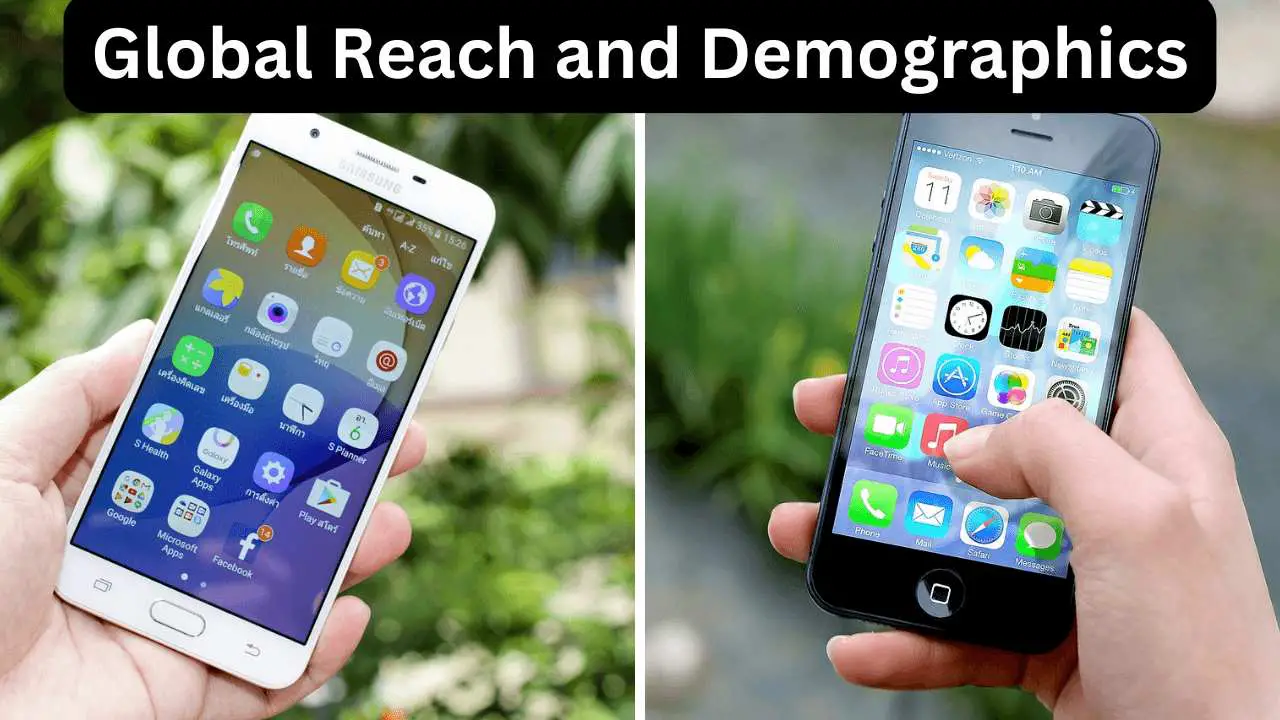
Regional Popularity:
Google Play Store dominates in regions like Asia, Africa, and Latin America, where Android devices are more affordable and widely available. In contrast, the Apple App Store is more popular in North America, Western Europe, and parts of East Asia, where higher-income populations are more likely to invest in premium devices like iPhones.
User Demographics:
Google Play Store users tend to be younger, with a significant portion falling in the 18-34 age range. They often have a broader range of income levels due to the affordability of Android devices. These users tend to prefer free apps and are more likely to download games, social media, and utility apps. Apple App Store users, on the other hand, typically have higher disposable incomes and are more likely to spend on paid apps and in-app purchases. They also lean towards business, education, and productivity apps.
Language and Localization:
Google Play offers extensive localization, supporting over 100 languages and tailoring app recommendations to regional preferences. This helps it cater to a global audience. The Apple App Store also excels in localization, but it tends to focus on regions with higher iPhone penetration, offering localized app content and recommendations that align with regional tastes and needs.
FAQs - Frequently Asked Questions
What is the difference between Google Play Services and the Google Play Store?
Google Play Services is a background service that connects apps to other Google services such as Google Sign-In and Google Maps. It is distinct from the Google Play Store app, which is where users download and manage apps. Google Play Services does not significantly impact battery life or data usage.
Is the Apple App Store more secure than the Google Play Store?
The Apple App Store is generally considered to be more secure than the Google Play Store. Although the Google Play Store has a larger number of apps, which includes a higher proportion of malicious apps, the Apple App Store employs stringent security measures to protect users.
Which has more apps, the Google Play Store or the Apple App Store?
As of August 20, 2024, the Google Play Store hosts approximately 2,304,898 apps, while the Apple App Store contains about 2,037,795 apps. This indicates that the Google Play Store has a larger inventory of apps available.
What are the benefits of using the Google Play Store?
The Google Play Store offers several advantages including a vast selection of apps, a user-friendly interface, and regular updates that enhance functionality. It provides developers with easy app deployment, global access, and detailed analytics on user engagement.
Conclusion
The comparison between the Google Play Store and Apple App Store reveals significant differences in their approaches to app distribution and revenue generation. Both platforms have their strengths, with Google Play offering a larger app selection and a more streamlined review process, while Apple's App Store focuses on quality control and user safety. These differences have an impact on developers' strategies and users' experiences, shaping the mobile app ecosystem.
In the end, the choice between these platforms depends on various factors, including target audience, app category, and revenue goals. While Google Play provides a broader reach, the App Store often leads to higher revenue per user. To succeed in either marketplace, developers need to understand these nuances and tailor their approach accordingly. As the mobile app landscape continues to evolve, both platforms are likely to keep refining their strategies to balance developer needs with user expectations.
